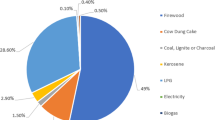Abstract
This work emphasizes a better understanding of the origin of human thermal discomfort under heterogeneous but steady environments, in subjects in the vicinity of physiological and sensory thermoneutrality. The knowledge of skin temperatures allows a psychophysiological study aiming at linking the body thermal state (local and global) to thermal sensation (perceptive and affective judgements). By using two driving simulators, 345 subjects were exposed to different thermal environments, modulated by factors such as the air distribution in the automotive cockpit or the clothing insulation (winter or summer). This work shows that consideration of the local thermal state is essential for the evaluation of thermal comfort in the case of non-uniform environments. Our experimental conditions point out that the overall sensation of discomfort is quantitative, with local unpleasantness needing to be felt for a certain number of body surfaces. A local origin is suggested for cold discomfort, in opposition to the global characteristics of warm discomfort.



Similar content being viewed by others
References
Candas V (2002) To be or not to be comfortable: basis and prediction. In: Tochihara Y (ed) Environmental ergonomics X, Fukuoka, 23–27 September 2002, pp 795–800
Candas V, Libert JP, Muzet A (1982) Heating and cooling stimulations during SWS and REM sleep in man. J Therm Biol 7:155–158
Candas V, Sari H, Herrmann C (1998) Assessment of risk of discomfort due to thermal transients based on a computer model of thermoregulation. In: Hodgdon JA, Heaney JH, Buono MJ (eds) Environmental Ergonomics VIII, San Diego, 18–23 October 1998, pp 395–398
Crawshaw LI, Nadel ER, Stolwijk JAJ, Stamford BA (1975) Effect of local cooling on sweating rate and cold sensation. Pflügers Arch 354:19–27
Herrmann C, Candas V, Hoeft A, Grivel F (1993) Skin temperatures, thermosensory and pleasantness estimates in case of heterogeneity in the thermal environment. J Therm Biol 18:329–333
Huizenga C, Hui Z, Arens E (2001) A model of human physiology and comfort for assessing complex thermal environments. Build Environ 36:691–699
ISO 7730 (1994) Moderate thermal environments—determination of the PMV and PPD indices and specification of the conditions for thermal comfort. International Standards Organisation, Geneva
ISO 10551 (1995) Ergonomics of the thermal environment—assessment of the influence of the thermal environment using subjective judgement scales. International Standards Organisation, Geneva
Jones BJ (2002) Capabilities and limitations of thermal models for use in thermal comfort standards. Energ Build 34:653–659
Nadel ER, Mitchell JW, Stolwijk JAJ (1973) Differential thermal sensitivity in the human skin. Pflügers Arch 340:71–76
Stevens JC, Choo KK (1996) Spatial acuity of the body surface over the life span. Somatosens Mot Res 13:153–166
Stevens JC, Choo KK (1998) Temperature sensitivity of the body surface over the life span. Somatosens Mot Res 15:13–28
Stolwijk JAJ (1970) Mathematical model of thermoregulation. In: Hardy JD, Gagge AP, Stolwijk JAJ (eds) Physiological and behavioral temperature regulation. Springfield, pp 703–721
Author information
Authors and Affiliations
Corresponding author
Rights and permissions
About this article
Cite this article
Pellerin, N., Deschuyteneer, A. & Candas, V. Local thermal unpleasantness and discomfort prediction in the vicinity of thermoneutrality. Eur J Appl Physiol 92, 717–720 (2004). https://doi.org/10.1007/s00421-004-1127-0
Accepted:
Published:
Issue Date:
DOI: https://doi.org/10.1007/s00421-004-1127-0




